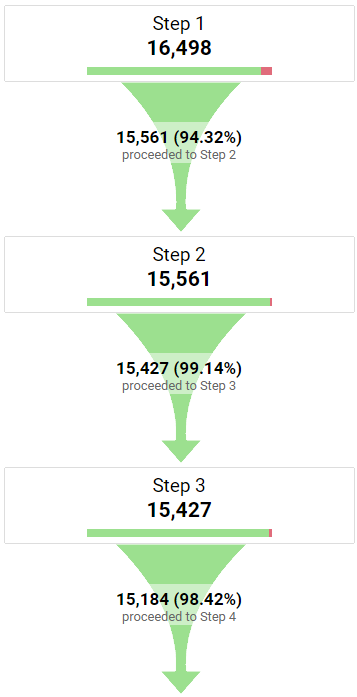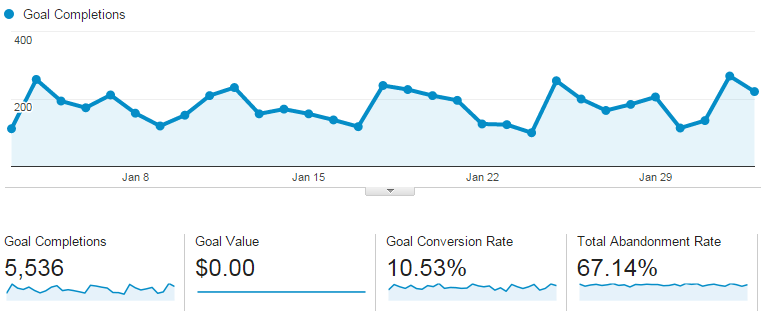Learn What Data Is Google Analytics Goals Unable to Track
Learn What Data Is Google Analytics Goals Unable to Track
Blog Article
Discover the Limitations of Google Analytics Goals: Unveiling the Information Types That Remain Untrackable
As businesses progressively depend on data-driven decision-making, recognizing the limitations of tools like Google Analytics ends up being paramount. While Google Analytics Goals deal valuable insights right into customer communications, there exist data types that avoid tracking, posturing challenges to a detailed understanding of user actions. These untrackable data kinds question about the precision and efficiency of the analytics data that companies heavily trust for their electronic strategies. Interested to reveal the hidden dead spots in your information evaluation process?
Insufficient User Trip Tracking
Insufficient individual trip tracking within Google Analytics can impede the ability to precisely evaluate individual habits. When the user trip is not completely tracked, there are spaces in the data that prevent a thorough understanding of just how customers communicate with a website. This lack of insight can result in missed opportunities for optimization and improvements to the customer experience.
One usual concern with incomplete user journey monitoring is the lack of ability to see the complete course that individuals take before completing an objective or leaving the website. Without this information, it is challenging to identify where individuals might be coming across challenges or rubbing points that prevent them from transforming. Furthermore, insufficient tracking can obscure the effect of particular marketing initiatives or internet site changes on user habits.
To address this constraint, it is crucial to establish correct tracking mechanisms within Google Analytics to catch the entire customer journey. This might involve setting up occasion tracking, objective funnels, or utilizing devices like Google Tag Manager to ensure that no crucial interactions go unrecorded. By getting a detailed sight of the individual journey, website owners can make even more enlightened choices to enhance individual engagement and drive conversions.
Attribution Challenges
Navigating via acknowledgment obstacles in Google Analytics requires a complete understanding of how different touchpoints add to the general conversion procedure. Acknowledgment obstacles arise from the complexity of modern customer journeys, where individuals connect with multiple channels before transforming. Google Analytics offers different acknowledgment models like first touch, last touch, and direct, each using a various perspective on just how credit rating is designated to touchpoints along the conversion course. These designs might not constantly precisely mirror the true effect of each touchpoint on the conversion.
One usual attribution challenge is the trouble in associating conversions to the proper source, especially in situations where individuals connect with several networks before transforming. Furthermore, cross-device monitoring presents another acknowledgment challenge, as users usually switch over between devices during their trip, making it challenging to track their communications perfectly.
Offline Conversions
Offered the difficulties connected with associating conversions properly in online networks, the measurement of offline conversions provides a considerable chance for marketers seeking a more thorough understanding of their customers' journey. Offline conversions refer to actions that customers absorb the physical globe, such as making purchases in brick-and-mortar stores or over the phone, participating in events, or engaging with printed materials - what data is google analytics goals unable to track. These conversions are critical for companies that run both online and offline, as they give important insights into the effectiveness of advertising projects throughout different touchpoints
Tracking offline conversions check traditionally positioned a considerable obstacle for online marketers, as it was challenging to attach these actions back to specific on the internet communications accurately. With advancements in technology, such as the combination of CRM systems, distinct identifiers, and discount coupon codes, organizations can currently bridge the void in between online and offline information to acquire a more site here alternative sight of consumer actions. By properly gauging offline conversions, marketers can optimize their techniques, assign resources much more efficiently, and ultimately boost the total customer experience.
Cross-Device Tracking
Cross-device monitoring plays a crucial function in recognizing the interconnected nature of consumers' electronic interactions throughout several devices. In today's omnichannel world, where individuals perfectly switch over between smart devices, tablets, and desktop computers, tracking their actions throughout these gadgets is essential for marketing experts to get a detailed sight of their consumer trip.

In addition, personal privacy issues and regulations such as GDPR and CCPA have better complex cross-device monitoring. With individuals requiring more control over their information and raised constraints on tracking technologies, marketing professionals must locate cutting-edge and privacy-compliant ways to attach user interactions across tools.
Dynamic Web Content Interaction
Comprehending customer engagement with dynamic content is crucial in enhancing digital marketing strategies for boosted target market interaction. Dynamic web content refers to web site elements that transform based upon individual habits, preferences, or various other factors, using an individualized experience. Tracking customer interactions with dynamic web content presents challenges for typical analytics tools like Google Analytics.
While Google Analytics can track basic communications like clicks and page views, it may battle to capture even more nuanced engagements within vibrant material. what data is google analytics goals unable to track. Metrics such as time invested in particular dynamic elements, float activities, or visit this page interactions within pop-ups are frequently not easily measurable making use of typical tracking approaches. This limitation hinders marketing experts' capability to completely comprehend how users are involving with dynamic web content and tailor their approaches appropriately

Verdict
Finally, Google Analytics goals have constraints in tracking incomplete individual trips, associating conversions accurately, capturing offline conversions, tracking cross-device communications, and gauging dynamic material engagement. These restrictions highlight the value of exploring extra tracking techniques and tools to obtain a much more comprehensive understanding of user habits and conversions beyond what Google Analytics can offer.
While Google Analytics Goals offer important insights right into customer communications, there exist data kinds that thwart tracking, posturing obstacles to a thorough understanding of individual actions.Insufficient customer journey monitoring within Google Analytics can hinder the ability to precisely assess user behavior. When the customer trip is not completely tracked, there are voids in the information that protect against a comprehensive understanding of how users communicate with a site.One usual concern with incomplete customer trip monitoring is the lack of ability to see the full course that users take in the past finishing a goal or leaving the site. By getting an extensive sight of the customer trip, internet site proprietors can make even more enlightened decisions to boost user engagement and drive conversions.
Report this page